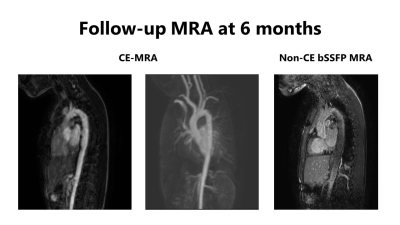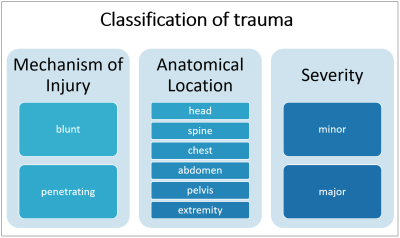Weekend Course
Introduction to Trauma
ISMRM & ISMRT Annual Meeting & Exhibition • 04-09 May 2024 • Singapore

| 13:00 |
Epidemiology & Costs of Acute & Chronic Traumatic Injuries
Ling Ling Chan
|
|
| 13:25 |
Basics of Central Nervous System Trauma: Mechanisms &
Acute/Chronic Sequelae of Traumatic Injury (Microscopic to
Macroscopic), Including Brain & Spine
Pia Maly Sundgren
In this lecture the underlying external cause for
traumatic brain injury will be explained. The typical
imaging presentation of different intracranial traumatic
injuries will be presented with special focus on MR
imaging but not exclusively. The value of advanced MR
sequences such as SWI, DTI and fMRI in the diagnosis,
follow-up, in prediction of clinical outcome and
disability will be discussed. Enhance missing tools and
how to transform potential sequences to clinical routine
protocols as well as the role of the MR physicist to
support and address the clinical need for improved and
clinical valuable sequences will be discussed.
|
|
| 13:50 |
Basics of Musculoskeletal Trauma: Mechanisms of
Acute/Chronic Sequelae of Traumatic Injury
Jin Rong Tan
|
|
| 14:15 |
 |
Basics of Abdominal Trauma: Mechanisms & Acute/Chronic
Sequelae of Traumatic Injury, Including Chest, Abdomen &
Pelvis
Hideki Ota
Keywords: Cardiovascular: Angiography, Body: Urogenital, Body: Body In acute trauma cases, CT is preferred for its accessibility and speed, though concerns arise over radiation and contrast agents. MR imaging supplements CT, particularly in assessing traumatic lesions. For chest trauma, MR aids in blunt thoracic aortic injury assessment, guiding management decisions. It's also useful for chest wall fracture assessment, revealing occult rib fractures. In abdominal trauma, MRCP helps detect pancreatic and biliary duct injuries; Gd-EOB-DTPA also aids in bile duct injury evaluation. MR imaging is valuable in pelvic injuries due to its excellent tissue contrast. Considering radiation exposure, MR imaging would be preferred in pediatrics and pregnant patients. |
| 14:40 |
Break & Meet the Teachers |
|
| 15:10 |
 |
Mid- & Low-Field MRI Imaging of Trauma: Is There a Role?
Anna Lavrova
Keywords: Physics & Engineering: Low-Field MRI, Image acquisition: Visualization, Education Committee: Clinical MRI Traumatic injuries impose a significant global health burden, resulting in substantial morbidity and mortality. Therefore, their timely and accurate diagnosis is crucial to ensure appropriate management and improve patient outcomes. Magnetic Resonance Imaging (MRI) has revolutionized diagnostic imaging, offering excellent soft tissue contrast and multiplanar capabilities. While high-field MRI scanners have been the cornerstone of trauma imaging, the emerging interest in mid- and low-field MRI systems has raised debates regarding their role in trauma assessment. This review aims to critically evaluate the potential of mid- and low-field MRI in trauma imaging, considering their advantages, limitations, and current evidence. |
| 15:35 |
How To Operationalise MRI in the Emergency Department
Catherine Mandel
Keywords: Transferable skills: Safety, Transferable skills: Project management, Transferable skills: Value Magnetic Resonance Imaging (MRI) is now a standard technology in many radiology departments and essential for modern patient care.It is being used more often in the care of emergency patients, including in trauma, ranging from minor injuries to major trauma. This brings its own risks: in particular patient and staff safety related to the magnetic field. This talk will discuss:
|
|
| 16:00 |
Panel Discussion |
The International Society for Magnetic Resonance in Medicine is accredited by the Accreditation Council for Continuing Medical Education to provide continuing medical education for physicians.